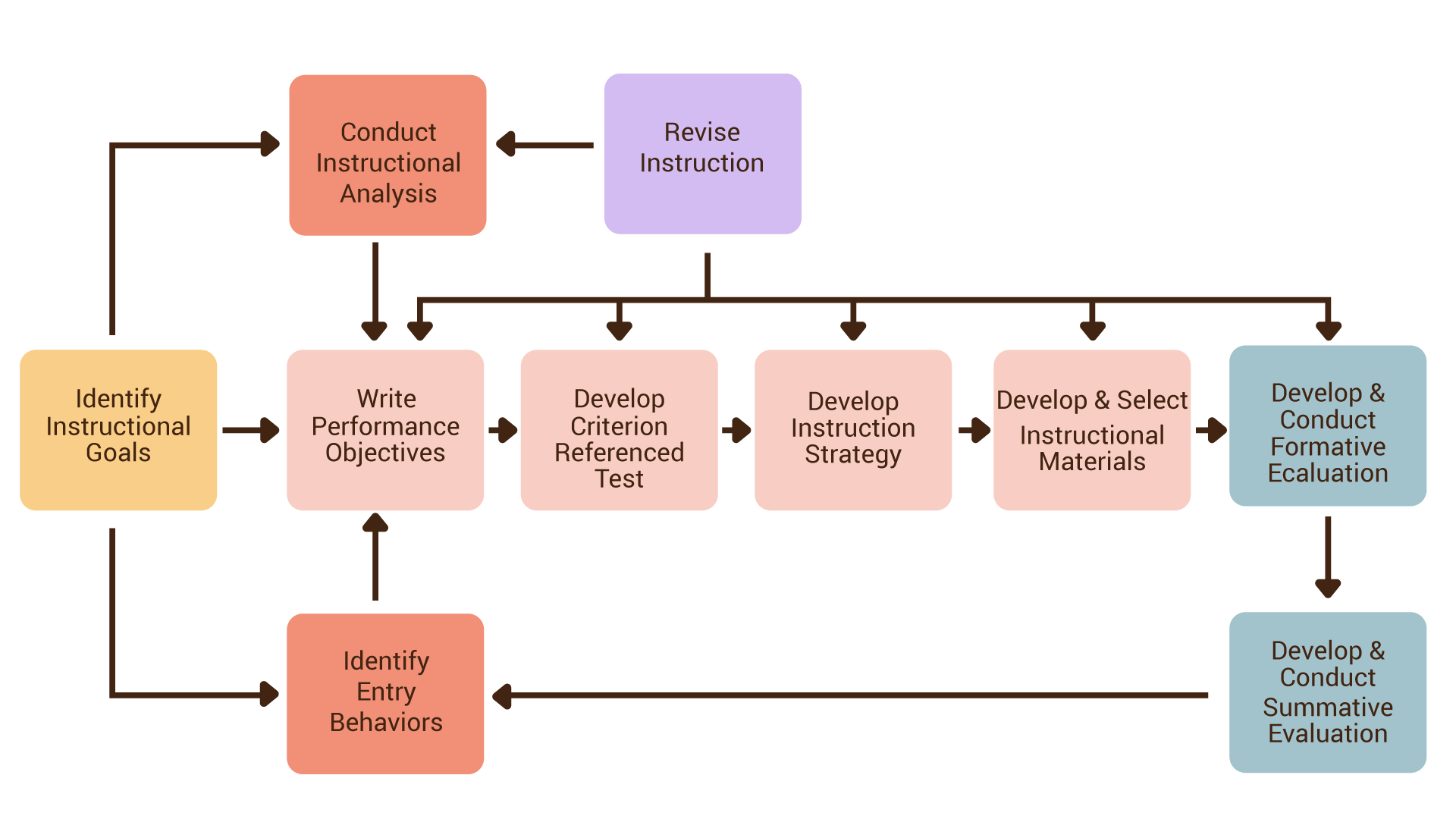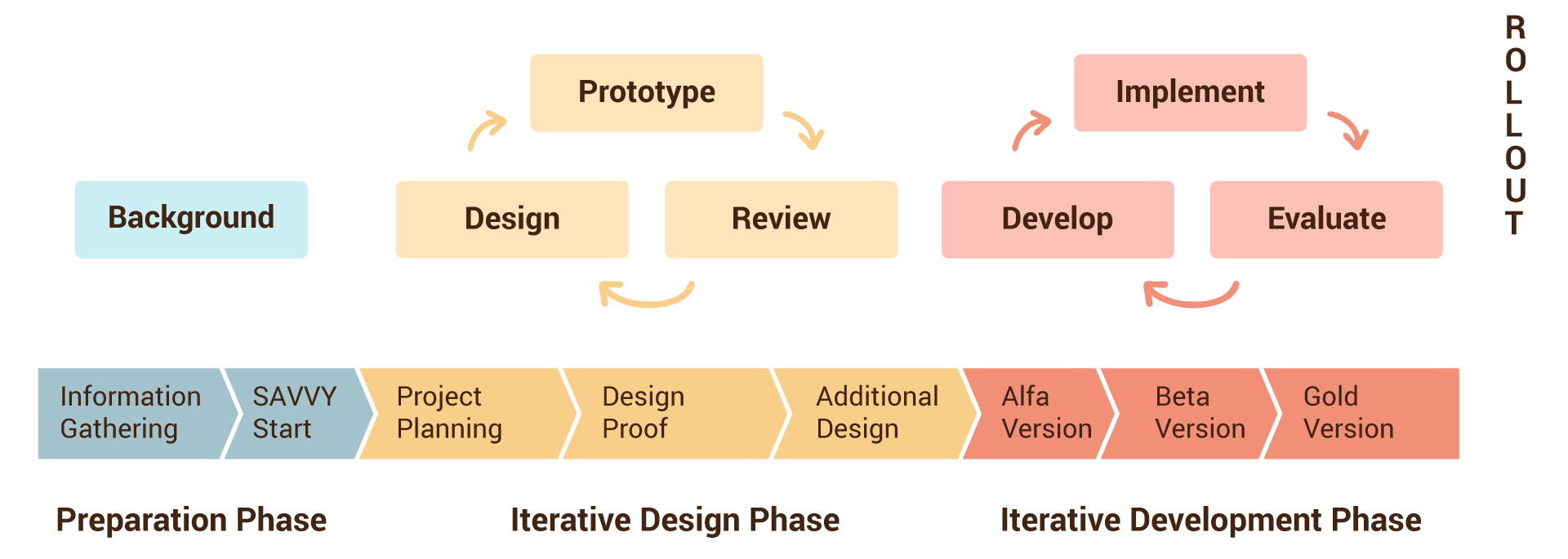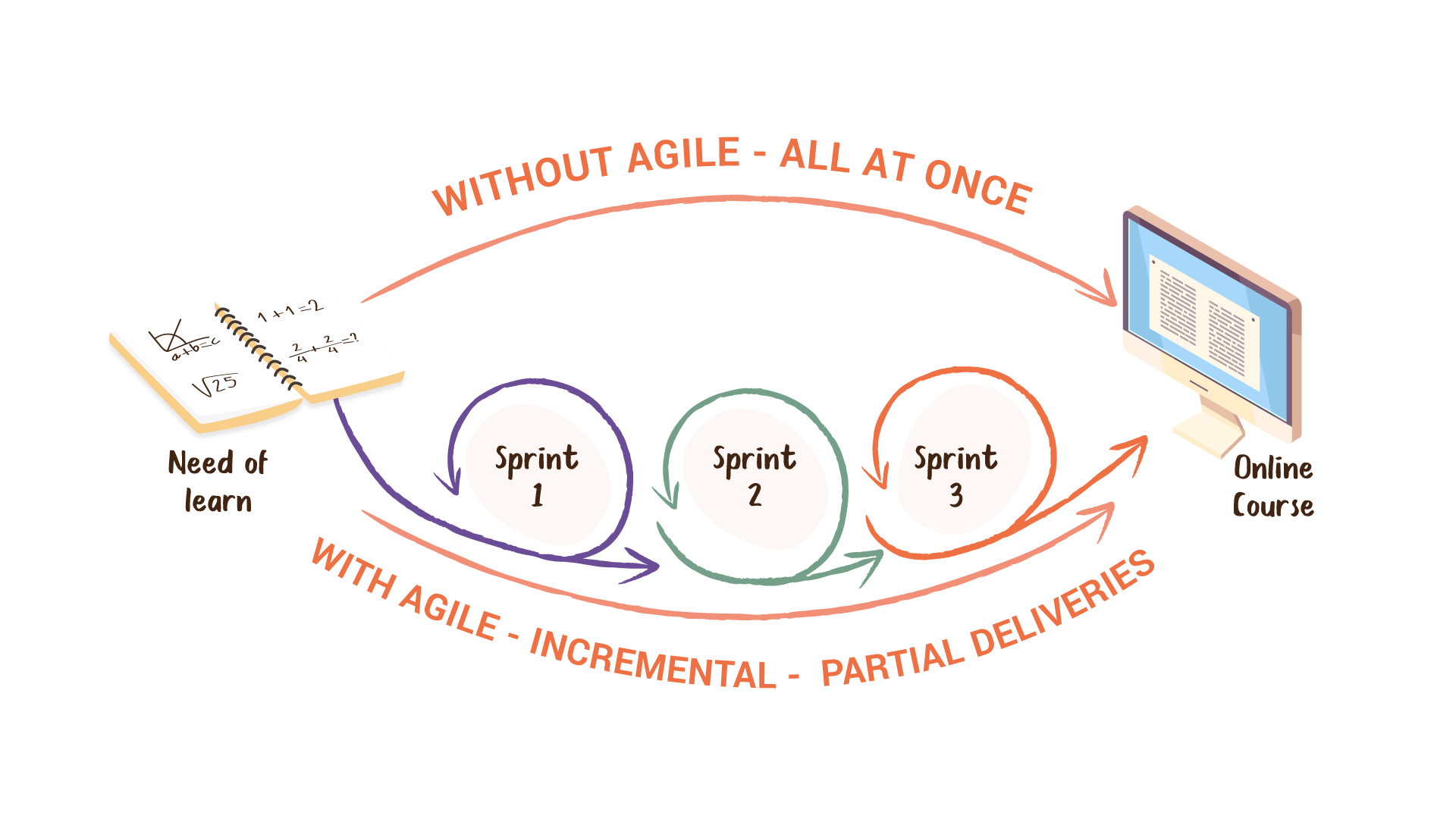Creating Effective eLearning Experiences
Creating an online course is creating a digital product after all, where the pedagogical and technological dimensions must be considered together with a student-centered design to produce a great online learning experience. A new Instructional Design model is needed to integrate in a more natural way with the reality of a constantly changing industry and better adoption for sectors other than the academic.
The Evolution Of Instructional Design
Instructional Design is an activity that has been transformed by three factors: cognitive psychology, constructivism, and technology. As a way of example, in the XIX century, education had more of a transmitting and instruction perspective and it was only until the XX century that the discussion started to move into the capacity that teachers have to adapt to varying situations and student’s context, moving away from conductism and centering around the student.
In 1990, with the incorporation of IT in education, the interest in constructivism grew, particularly because of its approach to let students be actively engaged in their learning process. Shortly after, the role of the Instructional Designer had to evolve. In the year 2000, the concept of Techno-Pedagogical designer appeared, defined as a specialist that integrates learning theories, cognitive psychology along with technology tools and Instructional Design models in collaboration with the domain expert (teacher).
With the evolution of the Instructional Designer role due to IT, the models they have in their toolset also evolve. For instance, these models moved from being a linear structure based on conductism, as is the case of the ADDIE Model, into cyclic structures that place the student at the center, like the SAM model of rapid prototyping, which comes from the software development industry.
The Need For An Instructional Design Model For eLearning
All across consultancies, SMEs, startups, corporations, universities and schools, a full online mode (eLearning) is being adopted, which has opened great challenges and opportunities, from pedagogy to technology in the educational and training sector.
Even though Instructional Design models have changed over time to adopt best practices in digital product development, on the one hand, they still use traditional models without too many changes, and on the other hand, the most advanced versions still do not adapt to the needs of a knowledge-based digital product like course design or an online learning program.
Let’s review (below) the most used models and the issues they have from an eLearning perspective.
ADDIE
This is one of the most traditional and widely used models for Instructional Design, however, it was created in 1975, a time before the rise of the internet and technology for education. It is a model based on instruction and a cascading process, therefore not suitable for the needs of agile adaptation in the light of the rapidly changing technology environment. From a component perspective, it is not enough to just Analyze, as its first process step, because the real needs of the users (students), characteristics, learning gaps, and context need to be understood in more detail. It also seems insufficient to have Evaluate as the final step of the process: actionable data collection and analysis are required to apply maintenance and continuous improvement of the eLearning strategy by means of short and agile cycles that reduce time and cost.
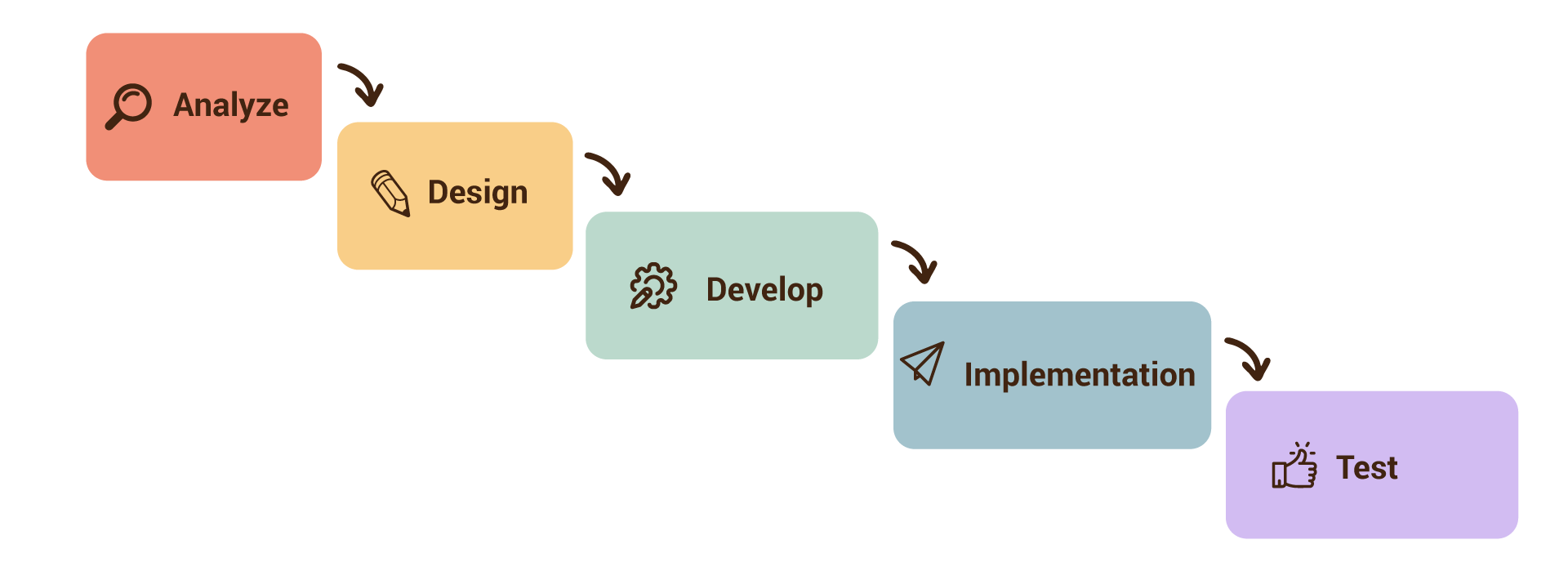
ADDIE Model
Dick And Carey
This is another traditional model that defines a structure from the instructional perspective without further consideration of the student itself. However, one of its stages considers in an adequate way the needs and behaviors of the students to establish performance objectives. While it can be considered in a certain way as a cyclic model, it doesn’t take ICT into account, and its structure is too complex and robust to be adopted in non-academic contexts, as startups, SMEs, and HR departments that wish to incorporate eLearning as part of their growth strategy.
Dick and Carey Model
ASSURE
This is a more updated model because it includes in all its process steps the technology; however, in the same way as ADDIE, the ASSURE model is a linear process that doesn’t take into account continuing improvement and adaptation to changes inherent to technology and the internet. Its stages outline an interaction with the users too late in the process, instead of “requiring user feedback” all the way from the start to end. Evaluate and Review, as the last stage is sometimes not enough in the continuous improvement of a digital environment.

ASSURE Model
SAM
This is a recent model that is inspired by the agile development concept used in software development, which considers cyclic processes and continuous improvement through product versions (Alpha, Beta, Gold). Even though this is the model that adapts in the best way to the needs of online learning, it lacks a specific consideration for technology selection along with pedagogical strategy, which requires enough care and attention from a Techno-Pedagogical designer.
SAM Model
Emerging Models
Agile, Lean, Design Thinking, and even UX, appear as methodologies for the design and development of digital products. Although eLearning must be considered as a digital product with all its components, at the design and creation stages it is necessary to consider inside the framework a technology and pedagogy dimension in order to create a great learning experience and also achieve learning outcomes.
Agile Model

Design Thinking
EXD Model: A Model For Designing eLearning Experiences
What Is The EXD Model?
It is a novel model for the design of online learning experiences (eLearning eXperience Design or EXD) that combines the best of Instructional Design methods and modern methodologies for the design and development of digital products, like Design Thinking, Agile, Lean and UX, but considers the particular needs implied in the design of a course or online program, especially in sectors that require an agile approach for cost and time reduction.
The EXD Model is an agile and iterative process with 6 phases:
- Empathize
- Define
- Select
- Create
- Deliver
- Measure
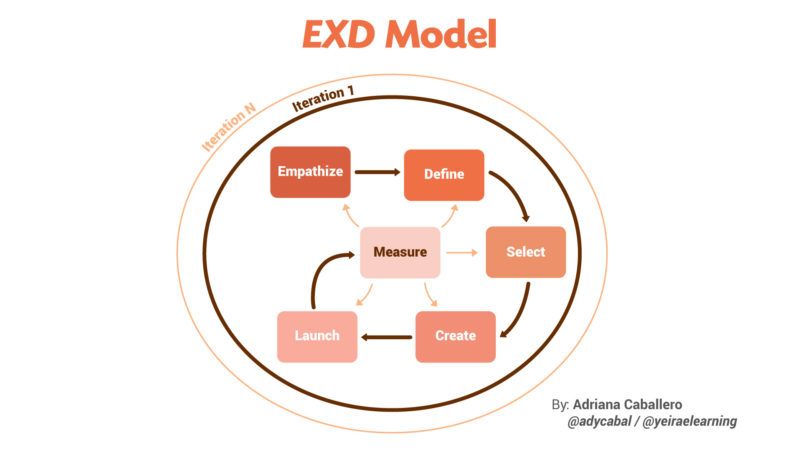
1. Empathize
Understand and know your users: who they are, what do they need, what is their context, what is the root of their problem and the learning gap. In this starting phase of the model, the following actions need to be done:
- Conduct interviews and observe target users
- Create a learner persona document
- Draft a clear problem statement
- Identify the learning gap
2. Define
Conceptualize and define the online course content centered around the user needs that were detected in the previous phase Empathize. In order to do that, the learner persona, problem statement, and learning gap documents will be key. In this phase, the activities to do are:
- Benchmark courses and similar topics
- Topic ideations and definition
- Learning objectives ideation and definition
- Course duration and outline ideation and definition
3. Select
Select the ideal technology to undertake the teaching-learning process—all information captured in the past phases, including learning goals, duration, and course content outline. This phase considers the technology selection that will support pedagogy, technical, and administrative support to provide a holistic approach to learning.
- Select the resource mix
- Select technology underlying technologies
- Select pedagogy underlying technologies
- Select administrative underlying technologies
4. Create
Produce each of the digital resources with the technology stack selected in the previous phase (resource mix), following the definitions of the course content and duration previously defined. This phase comprises activities like the following:
- Conduct research on the topic to develop
- Original content creation
- Content curation
- UX and visual design of resources
- Development of digital content (programming, video-recording, edition, etc.)
- Prototyping and user test*.
* It is recommended to carry out prototyping and testing activities with users (between 3 and 5 users) to validate the usability and experience path for each resource, as well as the presentation sequence. In case it is needed, this phase can iterate before going to the next phase.
5. Launch
Implement digital resources on an eLearning platform and course launch with the selected target audience. Among other activities in this stage, consider the following:
- Digital resource implementation on the eLearning platform
- Support channel opening (pedagogy, technical, administrative)
- Opening the online course platform
- Communication and promotion strategy
- Registration and enrollment of users
6. Measure
Monitor and measure the outcomes of the online learning experience. With the data collected, all actions toward continuous improvement will be done in the next iteration cycle. In order to collect the information needed, the following activities will be done:
- Follow up, monitoring and performance analytics of the users (students and teachers)
- Monitoring, maintenance and analysis of the systems and resources performance
- Quantitative and qualitative polls for users
- General evaluation of the eLearning strategy
- KPIs and outcome metric analysis
- Key actions definition for continuing improvement (Nth iteration)
How Does The Iteration Work In The EXD Model?
The iterative process in the EXD Model differs from other cyclic processes in that it doesn’t have to return to the initial phase (in our case Empathize) instead, the next iteration starts on any phase as needed, depending on the analysis of outcomes in the Measure phase. For instance, the next improvement cycle could start from the Selection phase to improve a very specific element of the format that is currently affecting the User Experience without necessarily going through Definition.
In this way, the iterative process is much more efficient. On the one hand, it allows time and cost reduction related to the next version of a course; and on the other hand, keeps the motivation in the team of the company or organization, as it generates a sense of progress in the design and development for the subsequent iterations (instead of a process that doesn’t end its iteration cycle), providing more space and time to obtain relevant information, and therefore, evidence that can endorse continuous improvement actions.
(EXD Model by Adriana Caballero & Yeira E-learning is licensed under a Creative Commons Attribution-NonCommercial-ShareAlike 4.0 International License. Based on a work at https://yeira.site/EXDModel. Permissions beyond the scope of this license may be available at https://yeira.site/EXDModel.)

